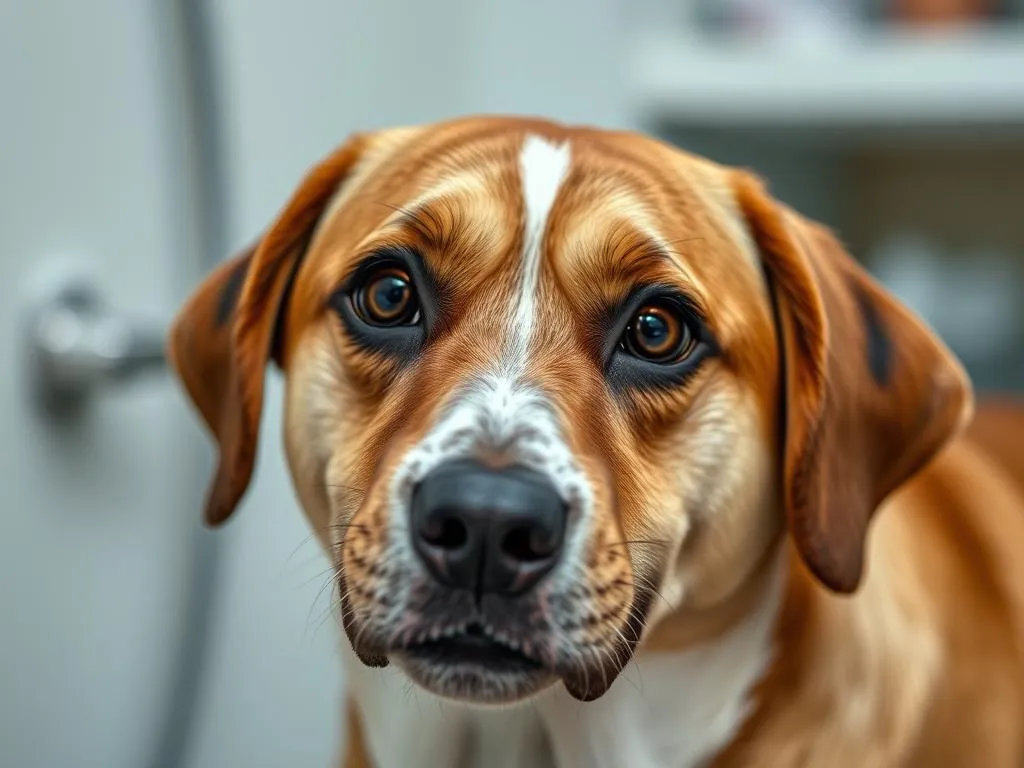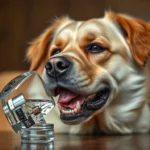
Dogs are notorious for their curious nature, often leading them to chew on or ingest items that are not food. One of the more common issues pet owners face is when their furry friend consumes plastic. Understanding the implications of this behavior is essential for any responsible dog owner. In this guide, we will explore the reasons why dogs eat plastic, the symptoms to watch for, what to do immediately after ingestion, and how to prevent this from happening in the future.
Understanding the Problem
Why Dogs Eat Plastic
Dogs may chew or consume plastic for a variety of reasons. Some of the primary motivations include:
- Boredom: Dogs, especially those left alone for long periods, might chew on plastic items simply to alleviate boredom.
- Curiosity: Dogs are naturally inquisitive creatures. They explore their environment with their mouths, which can lead them to taste or chew on plastic.
- Anxiety: Some dogs may chew on non-food items as a coping mechanism for anxiety or stress.
Common plastic items that dogs tend to ingest include:
- Chew toys that have broken apart
- Grocery bags or wrappers
- Packaging materials
- Children’s toys
Risks Associated with Ingesting Plastic
Ingesting plastic can pose significant health risks to dogs. Here are some potential dangers:
- Blockages: Larger pieces of plastic can cause obstructions in the intestines, leading to severe discomfort and potentially life-threatening conditions.
- Tears in the Digestive Tract: Sharp edges from certain plastic items can lacerate the stomach or intestines, causing internal bleeding.
- Toxicity: Some types of plastic contain harmful chemicals that can be toxic to dogs when ingested.
The severity of these risks often depends on various factors, including the size of the dog and the type and size of the plastic ingested. Smaller dogs may be more vulnerable to blockages due to their smaller digestive tracts, while larger dogs might handle certain items better, though they are not immune to the dangers.
Recognizing Symptoms of Plastic Ingestion
Immediate Symptoms
After ingesting plastic, some dogs may show immediate symptoms, including:
- Vomiting: This is one of the most common reactions if the body recognizes the plastic as a foreign object.
- Diarrhea: In some cases, dogs may experience loose stools as their bodies attempt to expel the plastic.
- Lethargy: If your dog seems unusually tired or disinterested in activities they typically enjoy, it may be a sign of distress.
Monitoring your dog’s behavior and physical condition is crucial in these situations. If you notice any of these symptoms, it’s essential to take action promptly.
Delayed Symptoms
In some cases, symptoms may not appear until hours or even days after ingestion. These can include:
- Abdominal Pain: Signs of discomfort, such as whining, pacing, or reluctance to be touched, can indicate internal issues.
- Constipation: If your dog is struggling to pass stool, it could be a sign of a blockage.
- Loss of Appetite: A sudden change in eating habits can indicate that something is wrong.
Recognizing these delayed symptoms is vital. If you observe any of these signs, it’s essential to consult your veterinarian as soon as possible.
What to Do If Your Dog Eats Plastic
Initial Steps to Take
If you find that your dog has eaten plastic, the first step is to stay calm. Assess the situation by checking for any remaining plastic items and ensuring your dog hasn’t ingested more.
- Remove Any Remaining Plastic: Clear the area of any additional plastic that your dog could ingest.
- Monitor Your Dog: Keep a close eye on your dog for any signs of distress or symptoms mentioned earlier.
When to Call the Vet
Knowing when to reach out to your veterinarian is crucial. Consider contacting them if:
- Your dog shows any immediate symptoms like vomiting or lethargy.
- You know the amount or type of plastic ingested and it’s concerning (like sharp or large objects).
- You have any doubts about your dog’s condition.
When calling the vet, provide detailed information about what your dog ingested, how much, and any symptoms they are showing. This information can help guide the vet’s recommendations.
At-Home Remedies vs. Veterinary Care
While some minor cases may allow for home observation, it’s essential to understand the limitations of at-home remedies. Some safe measures include:
- Encouraging Water Intake: Hydration can help in the digestive process, but be cautious. If a blockage is suspected, don’t force your dog to drink.
- Monitoring Behavior: Keep a close watch on your dog for any changes.
However, for serious cases, professional veterinary care is necessary. Inducing vomiting or performing an endoscopy may be required to remove the plastic safely.
Veterinary Assessment and Treatment
What to Expect at the Vet
When you take your dog to the veterinarian for suspected plastic ingestion, here’s what you can expect:
- Physical Examination: The vet will perform a thorough examination to assess your dog’s condition.
- X-rays or Ultrasounds: Imaging techniques may be used to determine if there is a blockage and where it might be located.
Potential Treatments
Depending on the findings, various treatments may be necessary:
- Inducing Vomiting: If the ingestion was recent and the vet deems it safe, they may induce vomiting to expel the plastic.
- Endoscopy: This procedure can be used to remove the plastic without the need for surgery.
- Surgery: In severe cases where blockages or tears are present, surgical intervention may be required.
Post-Treatment Care
After treatment, monitoring your dog for any complications is crucial. Some signs to watch for include:
- Changes in appetite or drinking habits
- Signs of pain or discomfort
- Unusual behavior or lethargy
If you notice any of these symptoms, contact your veterinarian promptly for further guidance.
Prevention Strategies
Dog-Proofing Your Home
Preventing plastic ingestion starts at home. Here are some effective dog-proofing tips:
- Keep Plastic Items Out of Reach: Store plastic bags, packaging, and toys in secure locations.
- Designate Safe Chew Toys: Provide your dog with appropriate and durable chew toys to satisfy their chewing instincts.
Behavioral Training
Training your dog can also help reduce the likelihood of plastic ingestion:
- Discourage Chewing on Inappropriate Items: Use commands and positive reinforcement to teach your dog what they should not chew on.
- Provide Mental Stimulation: Engage your dog with puzzle toys, training exercises, or regular walks to lessen boredom and anxiety.
Frequently Asked Questions
Can all types of plastic be harmful?
Not all plastics are created equal. While any plastic can pose a risk, certain items like packaging materials or sharp-edged toys are more dangerous. It’s essential to understand the specific risks associated with the types of plastic in your home.
What should I do if my dog is acting normal after eating plastic?
If your dog appears to be acting normally but has eaten plastic, continue to monitor them closely for any symptoms. If they develop any concerning signs, don’t hesitate to consult your veterinarian.
Are there specific breeds more prone to eating plastic?
Certain breeds may exhibit more chewing tendencies due to their energetic or curious nature. However, any dog can potentially ingest plastic, so it’s essential for all dog owners to be vigilant.
Conclusion
Understanding the risks and symptoms associated with plastic ingestion is vital for any dog owner. By being proactive, monitoring your dog’s behavior, and implementing preventive measures, you can significantly reduce the risk of plastic ingestion. If you ever find yourself in a situation where your dog eats plastic, remember to stay calm and seek veterinary assistance as needed. Your dog’s health and safety should always come first.









